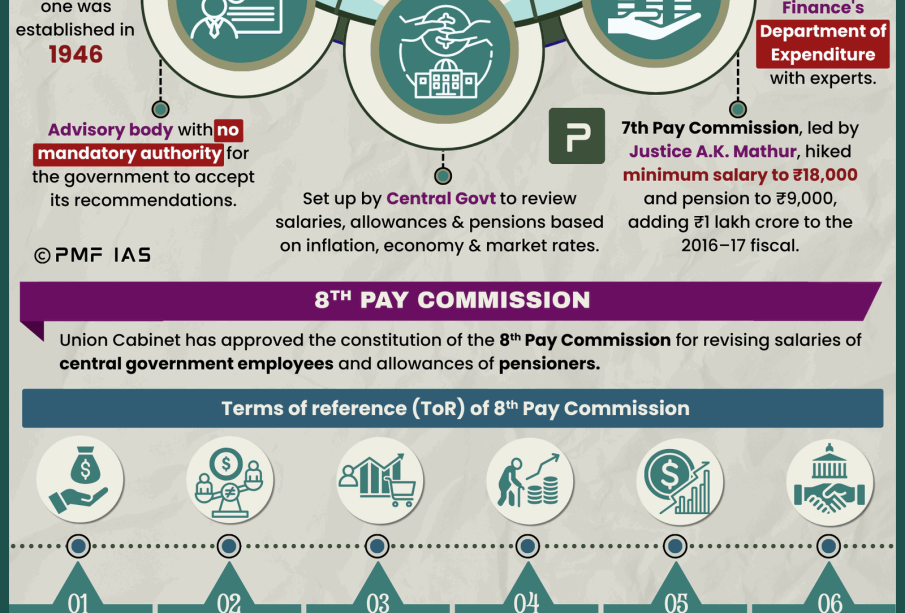Understanding the 8th Pay Commission: Implications for Government Employees

Introduction to the 8th Pay Commission
The 8th Pay Commission has become a topic of great interest among central government employees in India, especially as they anticipate substantial changes in their salaries and allowances. Established to review the remuneration of government staff, the commission plays a pivotal role in ensuring that salaries keep pace with inflation and the rising cost of living. With the financial year nearing its end, discussions around the recommendations of the commission are intensifying.
Key Developments and Expectations
The 7th Pay Commission, which was implemented in 2016, increased salaries by an average of 23.55%. The 8th Pay Commission is expected to commence discussions and evaluations by early 2024, with recommendations likely to be implemented in 2025. Employees have high hopes for the 8th Commission, especially given the increasing economic challenges. The government has indicated that it is aware of the concerns regarding the rising cost of living, where inflation has consistently impacted household expenditures.
Moreover, factors such as the implementation of the Goods and Services Tax (GST) and changes in economic policies are being taken into account. Experts predict that the 8th Pay Commission could follow a similar trajectory to its predecessors, proposing a salary hike between 30-35%, though this is speculative at this stage and may vary depending on economic conditions at the time.
Important Factors to Consider
Among the factors likely to influence the commission’s recommendations are the economic progress post-COVID-19 and the public sector’s financial health. The pressures from state government employees and pensioners are also likely to play a role in framing the commission’s deliverables. Additionally, regional pay disparities may be addressed to ensure a fair structure across various states.
Conclusion and Future Outlook
The establishment of the 8th Pay Commission is highly significant for millions of government employees and their families across India. It not only aims to provide better remuneration but also seeks to sustain the morale of the workforce during challenging economic times. If the projections of a 30-35% salary hike are accurate, it could lead to an increase in disposable income, subsequently boosting the economy through increased spending. Stakeholders in the public sector will continue to monitor developments closely, which will shape expectations and financial planning for many households. The release of the commission’s report will undoubtedly be a key event to watch for as it has the potential to lead to substantial changes in the lives of government employees in the coming years.




